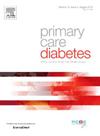Diabetes self-management smartphone application: Could it be an alternative for continuous glucose monitoring in low resource settings?
IF 2.6
4区 医学
Q3 ENDOCRINOLOGY & METABOLISM
引用次数: 0
Abstract
Background
The “Rightest” app connected to Rightest glucose meter via Bluetooth, helps to set blood glucose target and customize measurements. The app is provided with ketone alert when BG is ≥ 240 mg/dl.
Aim of the work
To assess the role of the rightest app in improving glycaemic control as well as quality of life in a 6- month interval of its usage.
Patients and methods
A clinical trial included 40 participants with type 1 diabetes, mean age 14.3 ± 1.42 years and diabetes duration of 4.5 ± 3.6 years regularly following up at Diabetes Unit. Rightest app was installed on the participants’ smart phone on enrollment and 6 months later assessment of the glycemic control was done by HbA1c and time in range. Results collected from app Quality of life (PedsQL) and user experience (UEQ) Questionnaires were applied at the end of the study.
Results
Using smartphone app yielded a significant reduction in mean BG level (-17.64 %, p = 0.012) that decreased HbA1c ( −10.63 %, p = 0.000). Increase of SMBG frequency was observed (p = 0.04). This is reflected on a 20 % increment time in range generated by app. (p-value = 0.002) and lower time above range (TAR > 180 mg/dl, −18.75 %, P = 0.001) in intervention group compared to control. However, the number of hypoglycemic events (p = 0.71) or DKA(p = 0.59) did not differ between groups. PedsQL questionnaire total score has improved (p-value = 0.010) in favor of intervention group with good experience with app indicated by UEQ. The pragmatic total score (1.425) of UEQ was above average while the hedonic total score was good (1.250) and overall score was good (1.338). The higher score of UEQ was inversely correlated with mean BG (r = -0.414, P = 0.008) and positively correlated to glycemic control (r = 0.644, p = 0.002).
Conclusion
Using mobile apps as an alternative for CGM in low resource settings can help improve glycemic control and quality of life for those who don’t have access to diabetes technology services because of unavailability or unaffordability.
糖尿病自我管理智能手机应用程序:它能成为低资源环境下连续血糖监测的替代方案吗?
背景:“Rightest”应用程序通过蓝牙连接Rightest血糖仪,帮助设定血糖目标和定制测量。当BG≥ 240 mg/dl时,app提供酮类警报。工作目的:评估在6个月的使用间隔中,正确的应用程序在改善血糖控制和生活质量方面的作用。患者和方法:一项临床试验包括40名1型糖尿病患者,平均年龄为14.3 ± 1.42岁,糖尿病病程为4.5 ± 3.6年,在糖尿病科定期随访。入组时在参与者的智能手机上安装righttest应用程序,6个月后通过HbA1c和时间范围评估血糖控制情况。从应用程序生活质量(PedsQL)和用户体验(UEQ)问卷中收集的结果在研究结束时应用。结果:使用智能手机应用程序可显著降低平均BG水平(-17.64 %,p = 0.012),降低HbA1c( -10.63 %,p = 0.000)。SMBG频率升高(p = 0.04)。这反映在与对照组相比,干预组app产生的范围内时间增加了20 % (P值= 0.002),范围以上时间较短(TAR > 180 mg/dl, -18.75 %,P = 0.001)。然而,两组之间低血糖事件(p = 0.71)或DKA(p = 0.59)的数量没有差异。应用体验良好的干预组PedsQL问卷总分有提高(p值= 0.010)。UEQ的语用总分为1.425分,高于平均水平;享乐总分为1.250分,较好,总分为1.338分。UEQ得分越高,与平均BG呈负相关(r = -0.414,P = 0.008),与血糖控制呈正相关(r = 0.644,P = 0.002)。结论:在低资源环境下,使用移动应用程序作为CGM的替代方案,有助于改善那些因无法获得或负担不起而无法获得糖尿病技术服务的人的血糖控制和生活质量。
本文章由计算机程序翻译,如有差异,请以英文原文为准。
求助全文
约1分钟内获得全文
求助全文
来源期刊

Primary Care Diabetes
ENDOCRINOLOGY & METABOLISM-PRIMARY HEALTH CARE
CiteScore
5.00
自引率
3.40%
发文量
134
审稿时长
47 days
期刊介绍:
The journal publishes original research articles and high quality reviews in the fields of clinical care, diabetes education, nutrition, health services, psychosocial research and epidemiology and other areas as far as is relevant for diabetology in a primary-care setting. The purpose of the journal is to encourage interdisciplinary research and discussion between all those who are involved in primary diabetes care on an international level. The Journal also publishes news and articles concerning the policies and activities of Primary Care Diabetes Europe and reflects the society''s aim of improving the care for people with diabetes mellitus within the primary-care setting.
 求助内容:
求助内容: 应助结果提醒方式:
应助结果提醒方式:


